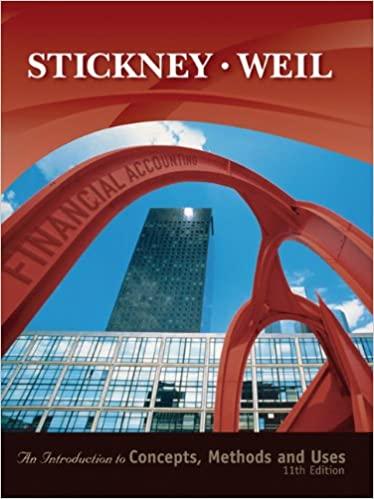




Ch 7 ! Required information Part 3 of 4 The following information applies to the questions displayed below.) Warnerwoods Company uses a perpetual inventory system. It entered into the following purchases and sales transactions for March 10 points Units Sold at Retail Units Acquired at Cost 60 units @ $50.20 per unit 205 units @ $55.20 per unit Date March 1 March 5 March 9 March 18 March 25 March 29 220 units @ $85.20 per unit Activities Beginning inventory Purchase Sales Purchase Purchase Sales Totals eBook 65 units 110 units @ $60.20 per unit @ $62.20 per unit 90 units @ $95.20 per unit 310 units 440 units Print References 3. Compute the cost assigned to ending inventory using (a) FIFO, (b) LIFO, (C) weighted average, and (d) specific identification. For specific identification, units sold include 45 units from beginning inventory, 175 units from the March 5 purchase, 25 units from the March 18 purchase, and 65 units from the March 25 purchase. Complete this question by entering your answers in the tabs below. Perpetual FIFO Perpetual LIFO Weighted Average Specific Id Compute the cost assigned to ending inventory using FIFO. Perpetual FIFO: : Cost of Goods Sold Date Goods Purchased Cost per # of units unit # of units sold Cost per cost of Goods Sold Inventory Balance Inventory Cost per # of units unit Balance 60 at $ 50.20 = $ 3,012.00 unit March 1 205 at $ 55.20 March 5 60 at 205) at $ 50.20 = $ 55.20 = $ 3,012.00 11,316.00 $ 14,328.00 Total March 5 5 60 at $ 601 at March 9 $ 50.20 = $ 55.20 = 3,012.00 11,316.00 $ 50.20 = $ 55.20 = $ 3,012.00 11,316.00 205) at 205 at Required information Complete this question by entering your answers in the tabs below. Part 3 of 4 Perpetual FIFO Perpetual LIFO Weighted Average Specific Id 10 points Compute the cost assigned to ending inventory using FIFO. Perpetual FIFO: Cost of Goods Sold Cost per cost of Goods Sold unit Goods Purchased # of units Cost per unit Date eBook # of units sold Inventory Balance # of units Cost per Inventory unit Balance 60 at $ 50.20 = $ 3,012.00 March 1 Print 205) at $ 55.20 60 at March 5 $ 50.20 $ 55.20 = 205) at $ 3,012.00 11,316.00 $ 14,328.00 Total March 5 0 References S 3,012.00 March 9 60 at 205 at $ 50.20 = $ 55,20 = 60 at 205) at 11,316.00 14,328.00 Total March 9 $ $ 50.20 = $ 3,012.00 $ 55.20 - 11.316.00 $ 14,328.00 $ 50.20 $ 55.20 $ 60.20 65) at $ 60.20 at March 18 at at Total March 18 110at $ 62.201 at $ 50.20 at $ 55.20 March 25 at $ 60.20 $ 62.20 at Total March 25 March 29 Total March 29 Totals $ 14,328.00 Part 3 of 4 Perpetual FIFO Perpetual LIFO Weighted Average Specific Id Compute the cost assigned to ending inventory using LIFO 10 points Perpetual LIFO: : Cost of Goods Sold Date Goods Purchased Cost per # of units unit # of units sold Cost per cost of Goods Sold unit Inventory Balance Cost per Inventory # of units unit Balance 60 at $ 50.20 = $ 3,012.00 eBook March 1 March 5 Print Total March 5 References March 9 Total March 9 March 18 Total March 18 March 25 Total March 25 March 29 Total March 29 Totals $ 0.00 art 3 of 4 Complete this question by entering your answers in the tabs below. pints Perpetual FIFO Perpetual LIFO Weighted Average Specific Id Compute the cost assigned to ending inventory using weighted average. (Round your average cost per unit to 2 decimal places.) eBook Weighted Average Perpetual: Cost of Goods Sold Cost of Goods Cost per unit Sold Goods Purchased Cost per # of units unit Date # of units sold # of units Inventory Balance Cost per unit Inventory Balance S 50.20 = $ 3,012.00 Print March 1 60 at References March 5 Average March 5 5 March 9 March 18 Average March 18 March 25 Average March 25 March 29 Totals $ 0.00 Compute the cost assigned to ending inventory using (a) FIFO, (b) LIFO, weighted average, and a specific identification. For specific identification, units sold include 45 units from beginning inventory, 175 units from the March 5 purchase, 25 units from the March 18 purchase, and 65 units from the March 25 purchase. Book Complete this question by entering your answers in the tabs below. Print o Perpetual FIFO Perpetual LIFO Weighted Average Specific Id erences Compute the cost assigned to ending inventory using specific identification. For specific identification, units sold include 45 units from beginning inventory, 175 units from the March 5 purchase, 25 units from the March 18 purchase, and 65 units from the March 25 purchase. Specific Identification: Date # of units March 1 Goods Purchased Cost per Goods # of units unit Puchased 60 at $ 50.20 = $ 3,012 2051 at $ 55.20 = 11,316 65 at $ 60.20 = 3.913 110 at $ 62.20 $ 6.842 Cost of Goods Sold # of units Cost per Cost of Goods sold unit Sold at $ 50.20 $ 0.00 at $ 55,20 = at $ 60.20 = 0.00 at $ 62.20 = Inventory Balance Cost per Inventory unit Balance at $ 50.20 = $ 0.00 at $ 55.20 = at $ 60.20 = 0.00 March 5 March 18 March 25 Totals at $ 62.20 = S 0.00 $ 0.00











